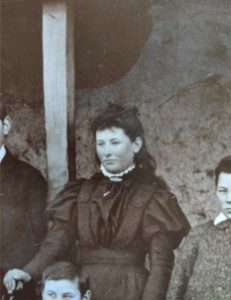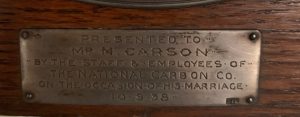Embroidered Tea Towel
Date of Creation: 1915
Materials: Linen and cotton thread
Researcher: Patrick Wightman
History:
Harriet Alice Lukey (‘Totty’) embroidered this patriotic piece on natural linen (with silk thread). The image shows an armoured cruiser at anchor, flying the Belgian flag backwards. It is half surrounded by roses, thistles, shamrocks and anchors. The roses signify England, the thistles Scotland and the intertwining shamrocks symbolise Ireland. Wales may be represented through the anchors, located in the bottom corners. The tea towel was created either before or soon after Totty was married, coinciding with the First World War. It has passed down through the generations.
Significance:
Although not made overseas, tea towels are culturally and historically important to New Zealand’s overseas history. They were made as a sign of support for the troops sent to fight in the trenches and represent ethnic ties to Britain and Ireland. Totty herself had three brothers who went to war: one died of his wounds during the Gallipoli campaign, and another lost his leg due to injuries in France.
Small items such as these give daily reminders to New Zealanders why their country was sending men and women off to war, some of whom would not return.
Jeffrey Family Clock
Date of Creation: 1937
Materials: Wood (oak), silver, glass
Description:
- Body: 210mm (h) x 240mm (l) x 120mm (d)
- Clock Face: 150mm diameter
- Plaque: 60mm (h) x 20mm (l)
Researcher: Amber Holdem
History:
The pictured grandmother clock was given to Murray Carson and Winifred Kissell in 1938 as a wedding present from the National Carbon Company. Carved from oak and imported from the Norland Clock Company in London in 1937 the clock is now a family heirloom belonging to the Jeffery family and has twice been passed down to the second eldest daughter. Since its arrival the clock has made its way up the country from Christchurch to Tauranga.
Significance:
Prior to the nineteenth century pendulum clocks were often made by artisans and were extremely expensive. However, the industrial revolution and the resulting mass production of clock parts made them more accessible to the middle and working classes. Clocks quickly became the centre of the home, providing an ever-present sense of progression and continuity. Family clocks like this one also help mark the passing of generational time, symbolically linking the past to the present as well as cementing a feeling of home and continuation.





